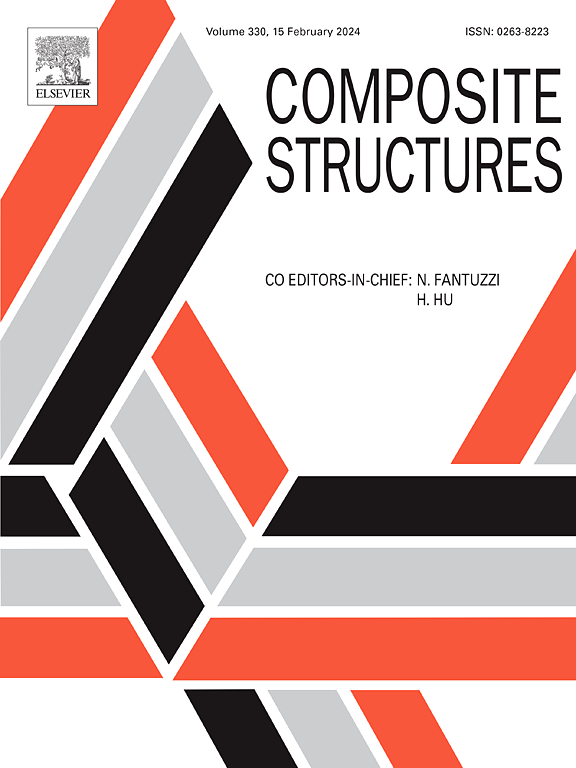Equilibrium-based 3D stress recovery of laminated anisotropic composite plates via isogeometric analysis
IF 6.3
2区 材料科学
Q1 MATERIALS SCIENCE, COMPOSITES
引用次数: 0
Abstract
Composite materials have wide-ranging applications in various engineering fields due to their unique mechanical properties and superior performance. However, the out-of-plane, through-the-thickness stresses may result in delamination failure, and most existing composite plate models are typically unable to capture them with a good accuracy-to-cost ratio. In this paper, we propose a stress recovery method based on Isogeometric Analysis (IGA) to overcome this challenge. The proposed method involves two steps: first, a displacement solution is obtained by applying the classical composite plate theory based on a Galerkin isogeometric formulation. This is followed by the computation of the in-plane stress derivatives required to accurately recover the out-of-plane stresses, directly enforcing strong-form equilibrium across the plate thickness. The governing equations employ Kirchhoff plate theory, while the equilibrium equations and numerical integration, using the composite trapezoidal rule, discretize the plate thickness into layers to extend stress recovery to three dimensions. This method requires high-order continuity; therefore, isogeometric analysis, known for its high accuracy and continuity properties, becomes a desirable option. Our efficient method shows remarkable accuracy, matching Pagano’s solution for cross-ply laminates and 3D FEM for angle-ply, symmetric, and unsymmetric across various test scenarios.
基于等几何分析的各向异性层合复合材料板三维应力恢复平衡
复合材料因其独特的机械特性和优异的性能,在各个工程领域有着广泛的应用。然而,平面外、贯穿厚度的应力可能会导致分层失效,而现有的大多数复合材料板模型通常无法以良好的精度-成本比捕捉到这些应力。在本文中,我们提出了一种基于等几何分析(IGA)的应力恢复方法来克服这一难题。所提出的方法包括两个步骤:首先,通过应用基于 Galerkin 等几何公式的经典复合板理论获得位移解。然后计算精确恢复面外应力所需的面内应力导数,直接在整个板厚范围内实现强形式平衡。控制方程采用基尔霍夫板理论,而平衡方程和数值积分则采用复合梯形法则,将板厚度离散为若干层,从而将应力恢复扩展到三维空间。这种方法需要高阶连续性;因此,以高精度和连续性著称的等几何分析成为一种理想的选择。我们的高效方法显示出卓越的准确性,在各种测试场景中,与 Pagano 的交叉层压板解决方案以及角层、对称和非对称的 3D FEM 相匹配。
本文章由计算机程序翻译,如有差异,请以英文原文为准。
求助全文
约1分钟内获得全文
求助全文
来源期刊

Composite Structures
工程技术-材料科学:复合
CiteScore
12.00
自引率
12.70%
发文量
1246
审稿时长
78 days
期刊介绍:
The past few decades have seen outstanding advances in the use of composite materials in structural applications. There can be little doubt that, within engineering circles, composites have revolutionised traditional design concepts and made possible an unparalleled range of new and exciting possibilities as viable materials for construction. Composite Structures, an International Journal, disseminates knowledge between users, manufacturers, designers and researchers involved in structures or structural components manufactured using composite materials.
The journal publishes papers which contribute to knowledge in the use of composite materials in engineering structures. Papers deal with design, research and development studies, experimental investigations, theoretical analysis and fabrication techniques relevant to the application of composites in load-bearing components for assemblies, ranging from individual components such as plates and shells to complete composite structures.
 求助内容:
求助内容: 应助结果提醒方式:
应助结果提醒方式:


